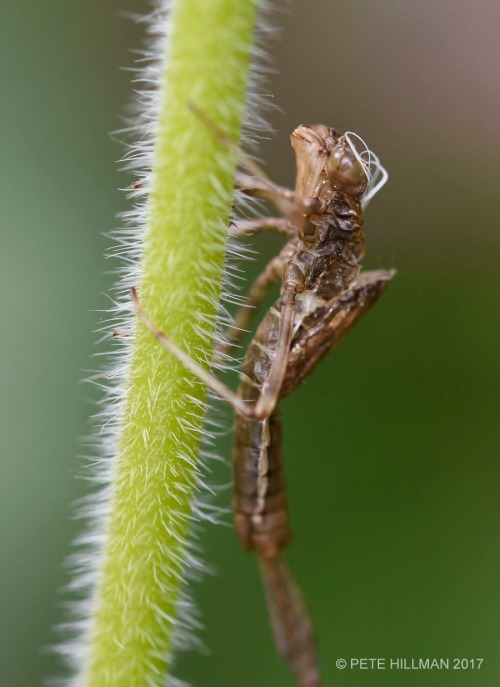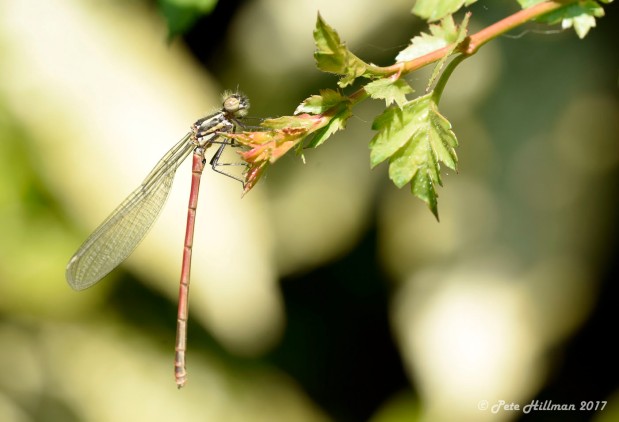
Today has been another exceptionally hot May day, and this afternoon I noticed quite a few recently emerged Large Red Damselfly (Pyrrhosoma nymphula) on plants around my garden pond. And I was delighted to find one which had left it’s larval skin behind.

Dragonflies and damselflies don’t go through a pupation stage similar to other insects like butterflies and moths. Final-stage larvae may sit for several days in shallow water getting ready for their final moult, breathing air. The larvae climb up vegetation near the water’s edge and secure a perch for emergence. In the above images one individual has done just this, and climbed a fair distance to find a good spot for the final transformation. Amazingly, in this state they redistribute their body fluids and push out first their thorax, head, legs and wings. These are allowed to harden before the abdomen is finally withdrawn, which in turn needs time to harden. Transformation is complete, and an adult is born.

In the images directly above and below, things may have not gone quite to plan for this newly emerged damselfly. Note how the exuvia (the cast skin), is still attached. The wings have not fully retracted and are trapped within. It may eventually free itself, but until then it will not be able to fly and is at the mercy of predation.

In a future post I will combine some of the images to show the life cycle which has, to my great surprise, taken 11 months from egg to adult.
Rear garden pond, Staffordshire, England. May 2017.



























